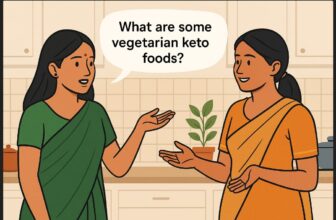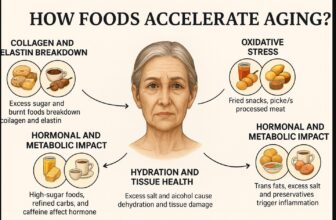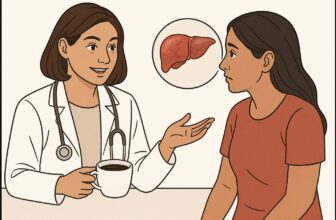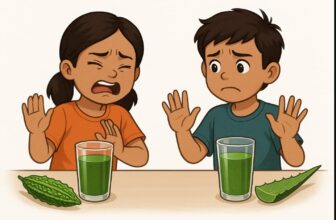Why Some Protein Sources Do More Harm Than Good?
In India, protein is often under-consumed, and misunderstood. While many people try to boost their intake, they end up choosing processed or misleading foods that barely deliver quality protein. Worse, some of these products can cause long-term health risks.
This list breaks down 10 packaged or marketed “protein” sources that are not as healthy as they seem, along with science-backed reasons to avoid them.
1. Protein Powders with Artificial Sweeteners
Many whey and plant protein supplements in India contain sucralose, aspartame, or acesulfame-K to improve taste. While they may help reduce sugar content, these sweeteners have been linked to:
- Gut microbiome imbalance (Nature, 2014)
- Possible insulin resistance
- Gastrointestinal discomfort in sensitive individuals
These may be tolerable in moderation, but overuse, especially with daily shakes, can lead to gut and metabolic issues.
2. Deep-Fried Paneer and Packaged Tikka Snacks
Fried paneer and tandoori-style snacks are often marketed as high-protein “healthy” starters. But here’s the catch:
- Deep frying creates trans fats and AGEs (Advanced Glycation End Products), which contribute to inflammation and heart disease
- Often loaded with refined oils and excess salt
You’re better off consuming raw or grilled paneer than versions that are oil-soaked and nutritionally compromised.
3. Protein Bars with High Sugar Alcohols or Corn Syrup
Some protein bars in India contain maltitol, sorbitol, or high-fructose corn syrup (HFCS).
These may cause:
- Bloating, gas, or laxative effects (especially if eaten regularly)
- Blood sugar spikes in products using glucose-based fillers
Always check if a “protein” bar contains over 8g sugar or sugar alcohols, if yes, it’s closer to a candy bar.
4. Processed Meats: Sausages, Cold Cuts, and Salami
In urban India, processed chicken products are increasingly marketed as protein-rich. However:
- WHO classifies processed meats as carcinogenic (Group 1)
- These contain nitrates, sodium, and preservatives, all linked to higher colon cancer risk
Fresh chicken, eggs, or legumes are safer, better protein options.
5. Instant Noodles with Added Soya Chunks
A growing number of instant food brands in India are adding soya chunks to noodles and calling them “protein-plus meals.” But the truth is:
- They’re still extremely high in sodium (1000+ mg per serving)
- Most noodles use refined maida and MSG
- Soya chunks are processed and lack micronutrients found in whole foods
These meals provide more salt and carbs than real nutrition.
6. Flavored Yoghurts With “High Protein” Labels
Flavored yoghurts in India often carry health branding, but if you flip the pack:
- They usually contain 10-15g sugar per 100g
- The actual protein content is around 4g
- Thickening agents and stabilizers reduce natural nutrition
Switch to plain curd or Greek-style dahi and add fruits or seeds at home for a healthier bowl.
7. Biscuits or Cookies with “Protein Added” Claims
Don’t fall for terms like “Protein Digestive” or “Protein Cookie.” These are typically made with:
- Maida (refined wheat) and margarine
- Low protein content (often <3g per piece)
- Excess calories from sugar and fat
They may give you 2g of protein but come with 120+ kcal and little satiety.
8. Frozen Protein Momos or Stuffed Parathas
These “ready-to-eat” protein foods contain:
- Low-quality textured vegetable protein (TVP)
- Preservatives, salt, and fillers
- Often deep-fried after microwaving
Even if protein is mentioned on the label, its digestibility is poor and overshadowed by additives.
9. Sugar-Heavy Milk Drinks (e.g. Bournvita, Horlicks Protein+)
These drinks are everywhere in Indian homes. While brands have introduced “Protein+” versions, most of them still contain:
- More sugar than protein (often double)
- High glycemic load
- Cocoa and additives instead of real nutrition
Unless it’s an unsweetened, fortified milk base, you’re better off drinking plain milk with soaked nuts.
10. Unregulated Soya Chunks from Cheap Brands
Soya chunks are cheap and widely used, but not all brands are equal. Some issues:
- Low-grade TVP may retain hexane solvent residues
- Poor amino acid profile (lacks methionine)
- Possible pesticide contamination in budget brands
Choose FSSAI-certified or organic brands and pair them with dal or roti to improve balance.
So, What Should You Eat Instead?
Here are better sources of protein you can trust in the Indian diet:
- Whole pulses and legumes: Rajma, chana, moong dal
- Nuts and seeds: Peanuts, almonds, sesame
- Dairy: Plain curd, paneer, milk
- Eggs: Boiled or poached for better nutrient retention
- Millets with dal: Bajra, ragi, and jowar with sprouts or curd
- Roasted chana: ₹5-10 for 8-10g protein
Summary – Unhealthy Protein Foods
Protein is essential, but not all “protein-rich” foods are good for you. Many products sold in Indian stores are ultra-processed, mislabeled, and packed with sugars or additives. Focus on real, whole foods and watch for misleading labels.
The next time a pack claims “protein power,” read the label carefully. Or better, choose something that doesn’t need marketing to prove its worth.





